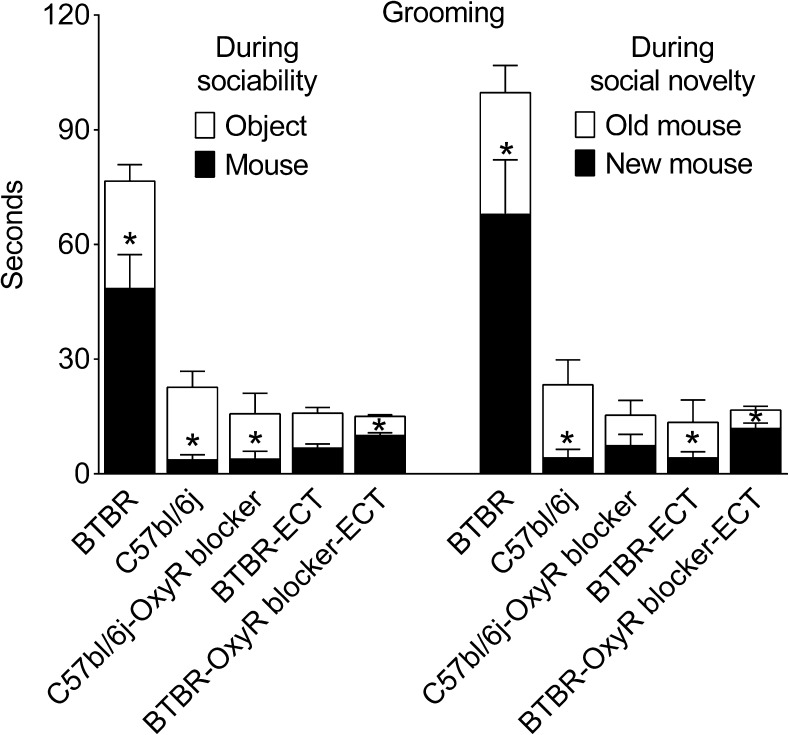Fig. 4.
Structure of repetitive behavior and effects of treatments. Grooming (in seconds) is shown in each of the end chambers for the sociability and social novelty phases of the test. BTBR mice (n = 7) spent more time grooming in the presence of a conspecific during sociability and in the presence of a new conspecific during social novelty phases. In C57Bl mice (n = 6), the distribution of grooming was the opposite of that in BTBR. Electroconvulsive therapy (ECT) applied to BTBR (n = 7) not only reduced total grooming duration, but also changed its distribution in the direction similar to that in C57Bl mice. Under the administration of an oxytocin receptor blocker (OxyR blocker) (2S)-2-Amino-N-[(1S,2S,4R)-7,7-dimethyl-1-[[[4-(2-methylphenyl)-1-piperazinyl]sulfonyl]methyl]bicyclo[2.2.1]hept-2-yl]-4-(methylsulfonyl)butanamide hydrochloride (n = 7), ECT, while shortening the duration of grooming, failed to inverse the distribution of repetitive behavior as it did when applied alone. Data are presented as mean ± SEM. *p < 0.05 object vs mouse for sociability and old mouse vs new mouse for social novelty (t test)

